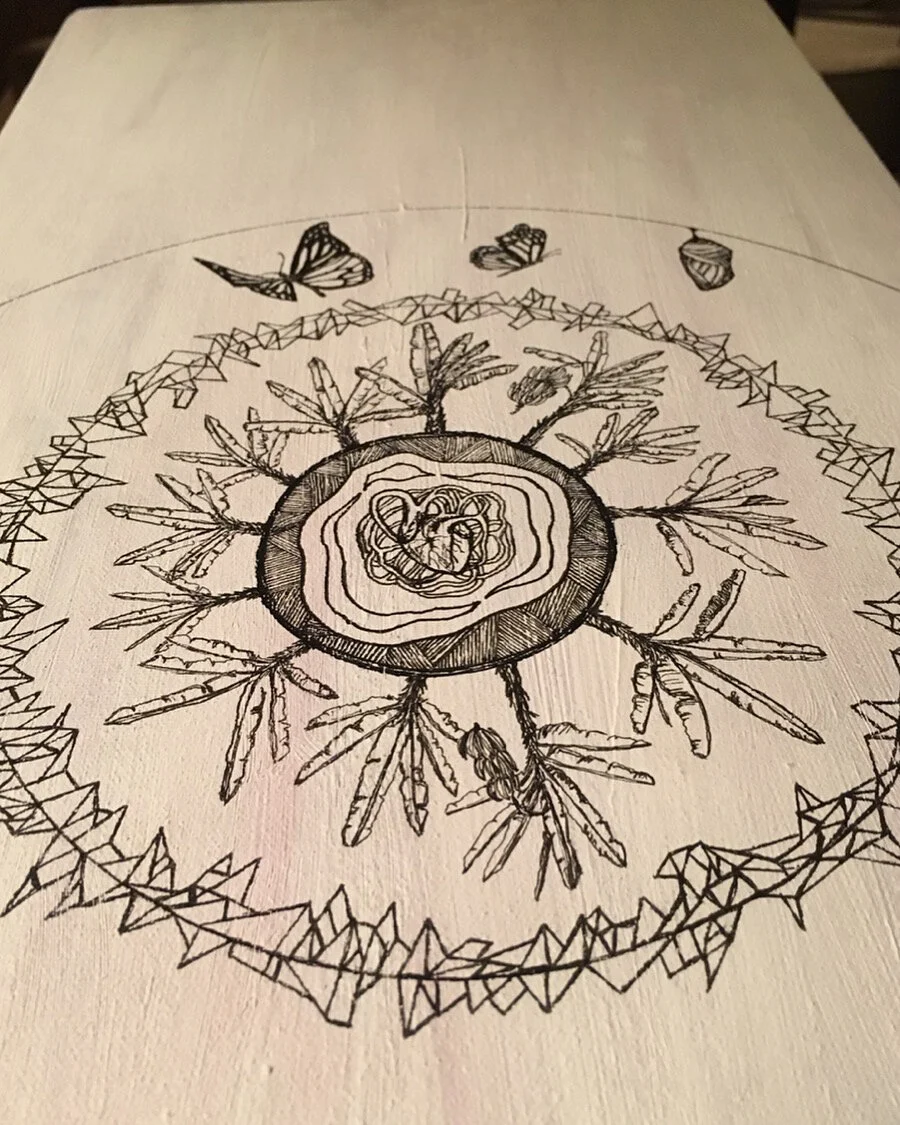



The mandala is a circular figure with roots in Hindu and Buddhist spirituality. It symbolizes the universe, and also a person’s search for self-unity. Mandalas are often used in art therapy, which is how I first became familiar with this motif. I first used mandalas as a simple art therapy exercise but years later realized the power of a new kind of process in my work. Using the mandala as a guide, I start with a simple idea in the center of a canvas, and then intuitively, without an overarching plan, I build on the work layer by layer. Before starting the mandala project, my process ended up being one of two ways: either I had a detailed plan for a painting and then executed that plan slowly and deliberately, or I would try to work intuitively and without a plan. Impatience always came along with intuitive work, pressuring me to finish an improvised painting sooner than I was ready.